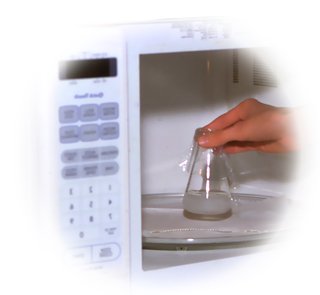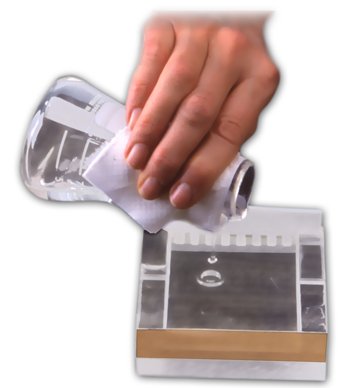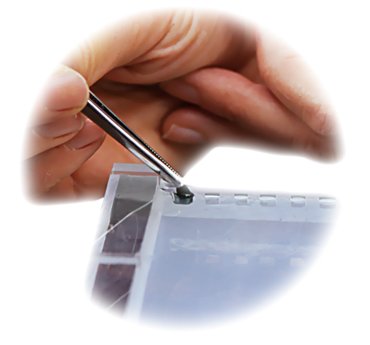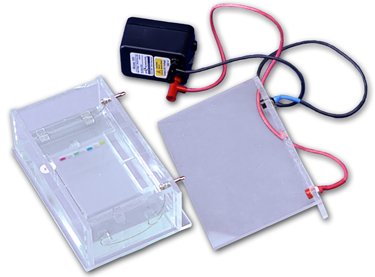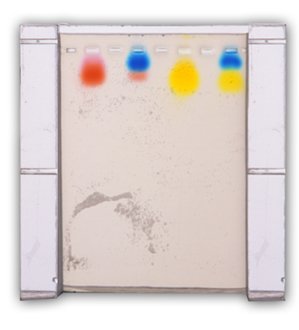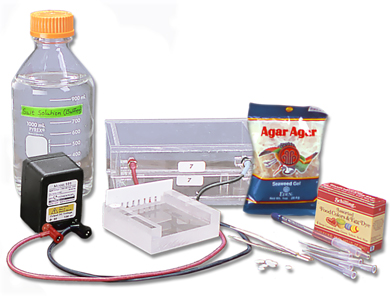
Materials you will need:
Electrophoresis chamber, gel form and comb
Power supply that produces 50-150 volts
Agar Agar granules
Salt solution
Commercial food colors
Filter paper circles (cut out with hole punch)
Tweezers
Masking tape
Water
Electrophoresis is a common lab technique used for separating DNA fragments. DNA samples are placed in a special gel and subjected to an electric field.
Because DNA is negatively-charged, it moves toward the positive electrode. The DNA fragments that are shortest will travel farthest, while the longest fragments will remain closest to the origin. Using the same basic principles, electrophoresis can also be used to separate RNA and proteins.
First, follow our step-by-step instructions to build a gel electrophoresis chamber using inexpensive materials from local hardware and electronics stores.
Then follow the below procedure to simulate DNA electrophoresis using food colors from your kitchen pantry.
